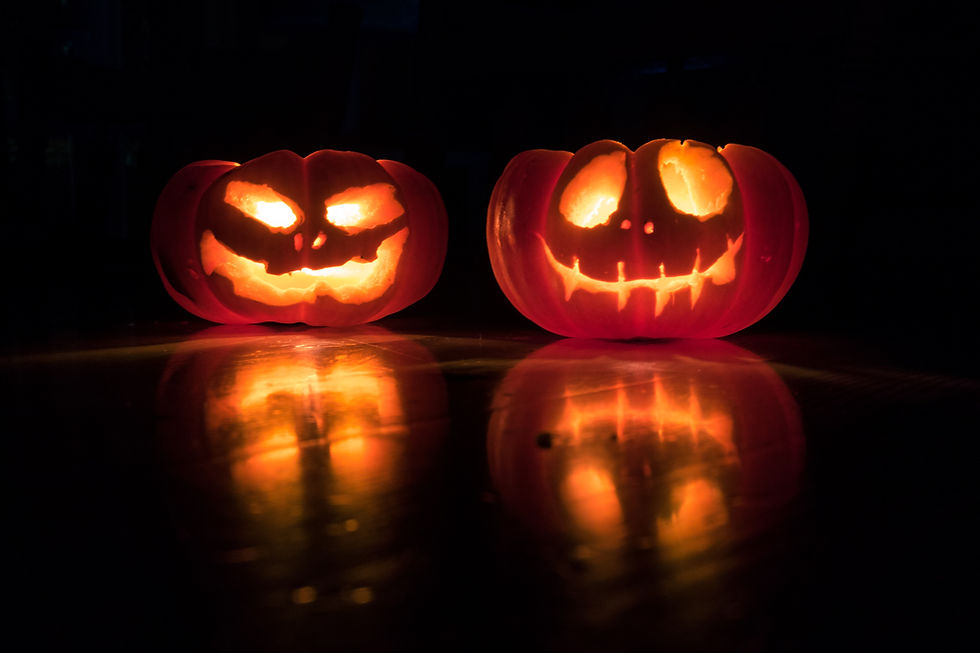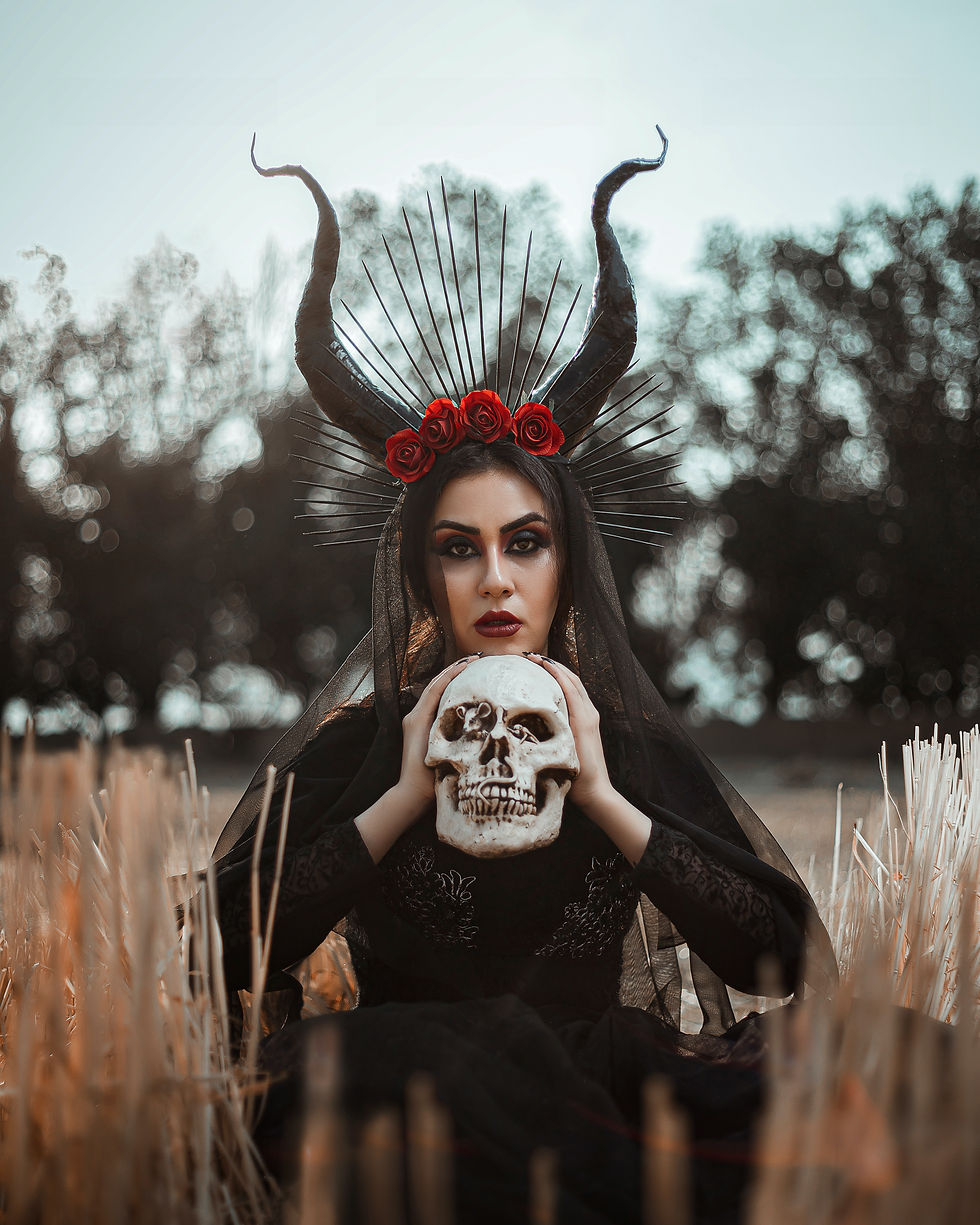
As autumn's vibrant hues adorn the world and the crisp air envelops us, witches and pagans around the world eagerly anticipate the arrival of Samhain. This ancient festival, celebrated with reverence and joy, holds a profound significance in the realm of witchcraft. In this post, we'll explore why witches celebrate Samhain, discuss the correct pronunciation, delve into its rich history, and shed light on the mystical concept of the thinning veil. We'll also uncover how pumpkins have become intricately connected to this enchanting holiday.

But What is Samhain Anyway?
Samhain is an ancient Celtic festival and one of the four major fire festivals in Celtic traditions, with the others being Imbolc, Beltane, and Lammas. It is traditionally celebrated on the night of October 31st, leading into November 1st, which is the midway point between the autumn equinox and the winter solstice.
Samhain holds great cultural and spiritual significance, and it has evolved over time to become a holiday with rich traditions and symbolism.
Samhain marks the end of the harvest season and the beginning of winter. It's a time when the days grow shorter, and nature undergoes a profound transformation. Leaves fall from the trees, and the earth begins its descent into the quiet and introspective season of winter. This transition is a central theme of the festival.
One of the most intriguing aspects of Samhain is the belief that the veil between the physical world and the spirit world is at its thinnest during this time. This belief is based on the idea that the boundary between the living and the dead becomes porous, allowing for easier communication with spirits, ancestors, and otherworldly beings. Witches and pagans often use this period for divination, ancestor veneration, and spirit communication.
Witches and pagans use Samhain as a time for personal reflection and spiritual growth. It's an opportunity to look back on the year, take stock of one's experiences and lessons, and prepare for the year ahead. Rituals and practices are often centered around introspection, meditation, and setting intentions for the future.

Many of the customs and symbols associated with Halloween, such as costumes, trick-or-treating, and pumpkin carving, have their roots in Samhain. As Christianity spread and absorbed some of the traditions of Samhain, the holiday evolved into All Saints' Day and All Souls' Day, which later influenced the development of Halloween as we know it today.
The Correct Pronunciation:
The correct pronunciation of Samhain is often debated, but the most widely accepted versions are "sow-in" or "sah-win." The “mh” is pronounced as a “w” sound. This is a characteristic feature of the Irish language and is common in various Gaelic words and names.
Why Witches Celebrate Samhain:

Witches and pagans celebrate Samhain as one of the eight sabbats in the Wheel of the Year. It marks the end of the harvest season and the beginning of winter. Samhain is considered a time when the boundary between the physical world and the spirit world is at its thinnest, allowing for heightened communication with the departed. Witches often use this opportunity to honor and connect with their ancestors, seek divination, and perform rituals to let go of the past and embrace new beginnings.
There are a few reason to celebrate this sabbat:

Ancestral Connection:
One of the central reasons witches and pagans celebrate Samhain is the strong emphasis on honoring and connecting with their ancestors. This time of year, when the veil between the physical and spiritual realms is believed to be thin, is seen as an opportune moment to commune with those who have passed on. Ancestor altars are often set up, adorned with photographs, mementos, and offerings, to pay respects to loved ones who have transitioned into the spirit world. It's a time to express gratitude for their guidance and seek their wisdom.

Divination and Spiritual Insight:
Samhain is considered an excellent time for divination and gaining spiritual insight. Witches often use various divination tools like tarot cards, scrying mirrors, or pendulums to seek guidance and glimpse into the future. The thinning veil is believed to make it easier to connect with spirit guides and receive messages from the other side. Divination rituals may involve reflecting on the past year, setting intentions for the year ahead, and seeking answers to pressing questions.
Letting Go and Renewal:

Samhain is seen as a time to release the past and make space for new beginnings. Witches often engage in rituals to symbolically let go of things that no longer serve them, whether they are negative habits, old grudges, or emotional baggage. This act of releasing the old paves the way for personal renewal and transformation. It's a time to shed what is unnecessary and embrace personal growth and positive change.
Nature's Transition:
The changing of the seasons is a fundamental aspect of Samhain's significance. It marks the end of the harvest season and the transition into winter. Witches and pagans celebrate this shift in nature by recognizing the cyclical nature of life and the interconnectedness of all things. It's a time to express gratitude for the bountiful harvest and prepare for the quieter, introspective months of winter. Nature's transformation mirrors their own spiritual journeys and personal growth.

Samhain as a Sabbat: As one of the eight sabbats in the Wheel of the Year, Samhain holds a special place in the witch's calendar. Each sabbat represents a turning point in the natural cycle, and Samhain is the point where the year's energy wanes, and the focus turns inward. It's an opportunity to reflect on the year's spiritual progress, celebrate achievements, and make plans for the year ahead.
Pumpkins and Samhain:
The connection between pumpkins and Samhain is a more recent development, largely influenced by the evolution of Halloween. Pumpkins were not traditionally associated with Samhain in its early Celtic roots. Instead, turnips and other root vegetables were carved into lanterns to ward off malevolent spirits. The practice of carving pumpkins into Jack-o'-Lanterns as we know it today became popular in North America because pumpkins were more available and has since become an iconic symbol of Halloween and, by extension, Samhain.

In summary, witches and pagans celebrate Samhain for a variety of deeply spiritual and personal reasons. Samhain is a time for witches to honor their heritage, connect with the spirit world, and embrace the changing seasons by connecting with nature's transitions, and marking an essential point in the Wheel of the Year. Samhain is a time of magic, introspection, and celebration of the interconnectedness of life, death, and rebirth. The significance of the thinning veil, and the evolution of customs like pumpkin carving make this holiday a unique and magical celebration that continues to inspire practitioners of witchcraft and curious souls alike. Whether you're a seasoned witch or simply curious about ancient traditions, Samhain is a time to appreciate the mysteries of the past and the possibilities of the future.
Comments